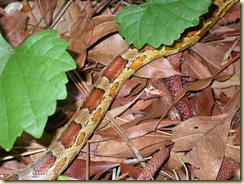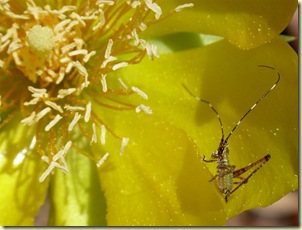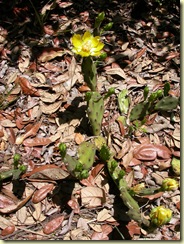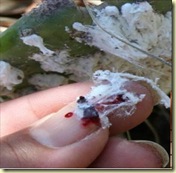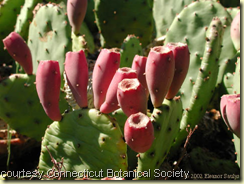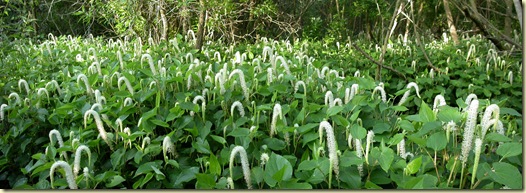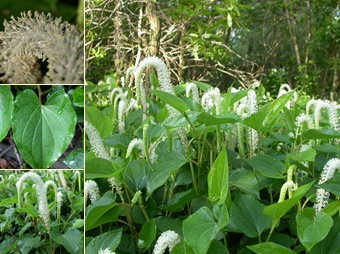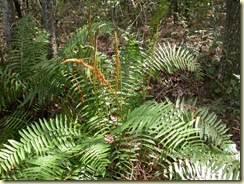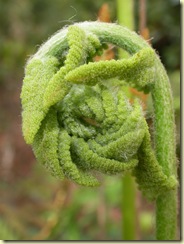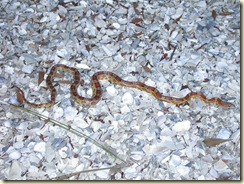 We were delighted to see this little red ratsnake warming up on the new trail surface last week. We can now happily add this critter to our list of species present in the Back Woods. Local University of Florida herpetology expert Monica McGarrity has been gracious enough to write a guest post for us on the red ratsnake. Definitely, do not miss reading the excellent guide Dealing with Snakes in Florida’s Residential Areas: Identifying Commonly Encountered Snakes co written by Monica and linked below as well.
We were delighted to see this little red ratsnake warming up on the new trail surface last week. We can now happily add this critter to our list of species present in the Back Woods. Local University of Florida herpetology expert Monica McGarrity has been gracious enough to write a guest post for us on the red ratsnake. Definitely, do not miss reading the excellent guide Dealing with Snakes in Florida’s Residential Areas: Identifying Commonly Encountered Snakes co written by Monica and linked below as well.
Note, there has been a recent change in the taxonomic classification of the red ratsnake…you may find many publications still refer to it as Elaphe guttata.
Guest Blogger: Monica E. McGarrity, Biological Scientist : Gulf Coast Research & Education Center/University of Florida/IFAS
Like the name suggests, Red Ratsnakes belong to the ratsnake genus Pantherophis—their scientific name is Pantherophis guttatus. Florida’s farmers have historically welcomed these non-venomous snakes to their farms, because they provide outstanding rodent control. In fact, Red Ratsnakes are more commonly called Cornsnakes because they liked to hang around in the rafters of old corn storage “cribs” and eat the mice and rats that tried to get into (and eat) the corn. All ratsnakes are excellent climbers—they can climb nearly straight up a tree or a brick wall! Their bodies aren’t quite round like the bodies of most snakes, but are shaped more like a loaf of bread in cross-section. The wide scales on their flat bellies work a lot like the treads on a tank, helping them to grip bark and climb trees more easily. These efficient predators can be found virtually anywhere there is rodent prey afoot—in citrus groves, sheds, garages, and even attics! Although you should welcome these natural exterminators in your yard, you may want to snake-proof the vents on your roof and control rodents in your attic or garage unless you don’t mind having them in your house as well.

 Cornsnakes are beautiful animals, and are very popular in the pet trade because they can be bred in a various hues of red, yellow, orange, pink, or even cream. In nature, their tan to grayish bodies are marked with orange-red blotches with dark outlines. Their heads are marked with a distinctive orange-red arrowhead, with a series of light and dark blotches inside. The markings on the belly are most distinctive of all—a black and white checkerboard pattern! You may encounter these snakes crossing trails or sunning themselves on logs or trees in natural areas, so you should learn to recognize these Florida natives.
Cornsnakes are beautiful animals, and are very popular in the pet trade because they can be bred in a various hues of red, yellow, orange, pink, or even cream. In nature, their tan to grayish bodies are marked with orange-red blotches with dark outlines. Their heads are marked with a distinctive orange-red arrowhead, with a series of light and dark blotches inside. The markings on the belly are most distinctive of all—a black and white checkerboard pattern! You may encounter these snakes crossing trails or sunning themselves on logs or trees in natural areas, so you should learn to recognize these Florida natives.
Dealing with Snakes in Florida’s Residential Areas: Identifying Commonly Encountered Snakes -- http://edis.ifas.ufl.edu/uw258
Florida Museum of Natural History Herpetology Department – Red Cornsnake -- http://www.flmnh.ufl.edu/herpetology/fl-guide/pantherophisguttatus.htm
Thank you Monica!!!
Nifty etymology note: “Pantherophis is derived from the Greek words"pan" which means bread, referring to the bread loaf, cross-section shape of the snake, "thero" means a wild beast of summer and "ophis" means snake and guttatus is derived from the Latin word gutta which means "dappled" or "spotted" referring to the dorsal pattern.” courtesy Virginia Herpetological Society
